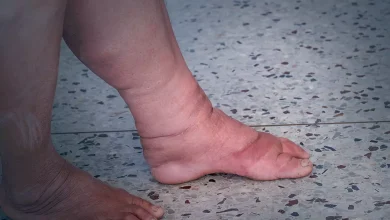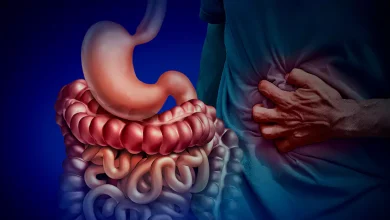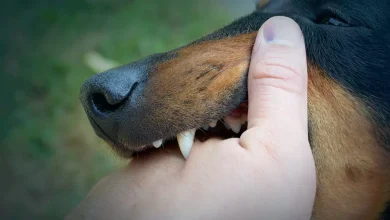What is Acquired Lipodystrophy?

Lipodystrophy can be described as an umbrella term for a group of medical complications that can be diagnosed as complete or partial loss of adipose tissue. Adipose tissue is the tissue where fat is stored in your body. In simple language, Lipodystrophy is a condition that manipulates your capability of storing fat. It’s called acquired Lipodystrophy when you aren’t born with it but get it later in life. It mostly affects the fat that’s just beneath your skin, and it might change the way you look. It also can lead to other changes in your body. People who have HIV are quite susceptible to Lipodystrophy (LD-HIV). It might be connected to the medicines they take for the disease itself.
What are the Types of Acquired Lipodystrophy?
The types of acquired lipodystrophy include:
– Acquired Generalised Lipodystrophy
Acquired generalised Lipodystrophy is also known as Lawrence syndrome and it mostly affects the arms, face, neck, and legs. In rare instances, loss of fat can also occur in Intra-abdominal fat and bone marrow. It usually begins during childhood or adolescence but it is not compulsory. It can cause life-threatening situations because of the total loss of fat veins bulging and muscular appearance from under the skin.
– Acquired Partial Lipodystrophy
Acquired partial Lipodystrophy is also called Barraquer-Simons Syndrome where the people suffering from it lose face fat extending to the neck, chest, upper abdomen, and arms but the hips, thighs, and legs are not affected by it. In some rare cases, puberty might lead to excess fat accumulation in the hips and legs part of the body. This type of Lipodystrophy generally starts showing its effects during childhood.
– High Active Antiretroviral Therapy (HAART) or Induced Lipodystrophy (Ld-Hiv)
This type of Lipodystrophy is usually caused by immunodeficiency virus (HIV) antiretroviral therapy called HIV-1 protease inhibitor-containing HAART. It is common among people who have already taken the therapy for more than 2 years continuously. The intensity of this type of Lipodystrophy is based on the individual cases and the inheritance in their body.
– Localised Lipodystrophy
Here, subcutaneous fat loss occurs in the small sections of the body. This type of Lipodystrophy is rare but it might also be contiguous or spread via bigger parts of the body.
What are the symptoms of Acquired Lipodystrophy?
The symptoms of acquired Lipodystrophy can vary according to each type. The most common symptom is loss of subcutaneous fat in each type. Apart from that the other symptoms usually include:
Symptoms of Acquired generalised Lipodystrophy:
– Loss of subcutaneous fat from the face, arms, legs, and neck.
– Fatigue
– Diabetes
– Pancreatitis
– Polycystic ovary syndrome
– Resistance to insulin
– Autoimmune hepatitis
– Hypertriglyceridemia
– Glucose intolerance
– Hepatic steatosis, cirrhosis, or fatty liver
Symptoms Of Acquired Partial Lipodystrophy:
– Membranoproliferative glomerulonephritis (a type of kidney disease)
– Glomerulonephritis
– Macular degeneration
– Drusen
– Lupus
– Resistance to insulin
– Hepatomegaly
– Celiac disease
– Dermatomyositis
– Vasculitis
– Pernicious anaemia
Symptoms of Induced Lipodystrophy (Ld-Hiv):
– Hypertriglyceridemia
– Coronary heart disease
– Losing subcutaneous fat from the face, arms, upper back, waist, and legs
– Diabetes
– Double chin
– The hump on the upper back.
Symptoms of Localised Lipodystrophy:
– Insulin resistance
– Losing subcutaneous fat from chin
What are the Risk Factors of Acquired Lipodystrophy?
The risk factors might include:
– Health complications including measles, infectious mononucleosis, hepatitis, or pneumonia.
– A condition where your body is attacked by your immune system known as an autoimmune disease.
– Pressure or repeated injections on the same part of your body
– Any kind of injury.
What are the Complications of Acquired Lipodystrophy?
Acquired Lipodystrophy might cause other complications based on the type of Lipodystrophy you have such as high cholesterol, triglycerides, diabetes, liver disease, and kidney failure. Doctors might be helpful to manage these complications. It can affect the way you look and in such cases, cosmetic surgery can be an option to improve your looks.
How Acquired Lipodystrophy is Diagnosed?
To diagnose Acquired Lipodystrophy, your doctor might carry out a full exam and ask questions about your health including:
– What are the symptoms you noticed?
– When was the first time you saw them?
– The changes in the body are happening in a particular area or whole over the body?
– Whether there are swollen bumps under your skin or a bumpy red rash?
– Do you have diabetes?
– The other health issues or recent injuries you had?
– Did you check your blood sugar, triglyceride, and cholesterol levels?
Body fat test can confirm the diagnosis.
To carry out a skin biopsy, a small piece of skin will be taken out and sent to a lab where the cells will be examined under a microscope. It helps a lot to confirm what condition you have.
Your doctor might also check for a pattern of fat loss through:
– Skinfold thickness measurements, that are checked with skin they can pinch between their fingers at certain parts of your body.
– Measuring bone mineral density through a special X-ray.
– A special whole-body MRI (magnetic resonance imaging) that is carried out by using powerful magnets and radio waves to produce clear images of tissues containing fat.
Blood tests are done to check:
– Blood sugar
– Fats
– Kidney health
– Liver enzymes
– Uric acid
If the doctor doubts that you have Acquired Lipodystrophy, they will check your blood for evidence of a certain way the body is attacking the fat cells.
What are the Treatment Options Available for Acquired Lipodystrophy?
The treatment options for Acquired Lipodystrophy include:
– Leptin replacement medication
Your doctor may recommend a medicine called metreleptin, which is a synthetic version of the fat hormone, leptin. If you have lipodystrophy then you might be lacking leptin in your body. This hormone helps in controlling your body’s metabolic procedures and might help to decrease high cholesterol and triglyceride levels.
– Diabetes and insulin resistance treatment
Lipodystrophy often leads to insulin resistance and/or diabetes and in such a case, your doctor may prescribe oral medication like pioglitazone metformin, sulfonylureas, or thiazolidinediones for treating it. Some people might require synthetic insulin for treating diabetes. You have to check your blood sugar levels regularly at the clinic or you can also use an at-home glucometer.
-Regulating triglyceride and cholesterol levels
The oral medications mentioned which are used to treat diabetes are also helpful for regulating cholesterol levels. You might also be prescribed statins, including rosuvastatin and pravastatin to regulate and manage your triglyceride and cholesterol levels. If you have extreme hypertriglyceridemia then you might require n-3 polyunsaturated fatty acids supplementation or fibric acid derivatives from fish oils.
– Cosmetic surgery and procedures
Acquired Lipodystrophy can make changes in your body parts, especially in the face, chest, or pubic region, which are not comfortable and affect the way you look. In such instances, cosmetic surgery can be helpful to improve your appearance and self-confidence. Plastic surgeons usually use facial reconstruction with free flaps, autologous adipose tissue transplantation, and silicone or other types of implants in the parts of your body where fat tissue is missing. Liposuction or surgical excision is used to unwanted extra fat from body parts like your chin or the back of your neck.
Living with Acquired Lipodystrophy
Lipodystrophy is a rare condition but it can be serious because there is no cure for it; however, certain treatments are available to manage its symptoms and other conditions connected with it, including diabetes and unusual cholesterol levels. Treatment is based on the type and individual because the symptoms vary from person to person. It might affect the way you look because of the accumulation of fats in the affected areas which might lower your self-confidence but it can be managed with cosmetic surgery and you can lead a normal life again. Depending on the type of Lipodystrophy, your doctor and his team will work with you to come up with the best treatment plan suitable for you. You need to ask questions from your doctor and other healthcare providers as they’re there to help.
Whom to Consult?
If you’re noticing a constant increase or decrease of fat in certain areas of your body and other symptoms of Acquired Lipodystrophy like diabetes and abnormal cholesterol levels, then you shall contact your doctor and get yourself checked to see if it’s happening because of Lipodystrophy or any other underlying condition. The treatment of this condition is very individualised and your doctor will make a treatment plan for you according to the symptoms you have.






